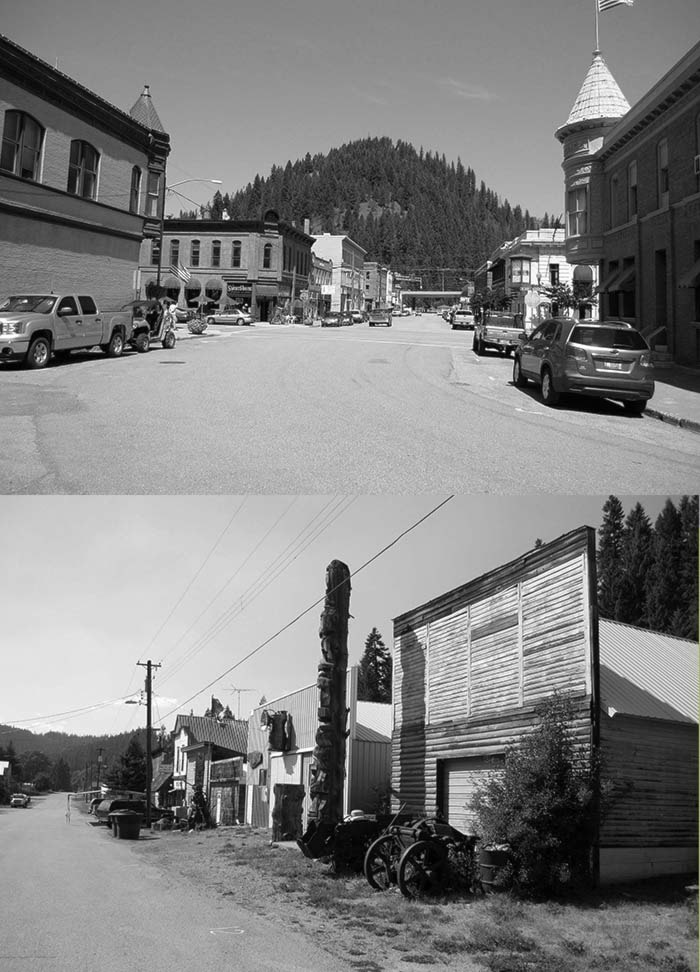Jim Cameron
Let's begin with a Wild West tidbit, shall we? On Oct. 26, 1881, in Tombstone, Arizona, Wyatt Earp, along with two of his brothers and Doc Holliday, took less than one minute to kill three (out of five) of their opponents in a gun battle in, or near, the O.K. Corral.
That is not the tidbit. That is a very brief description of what has become perhaps the most famous gunfight in American history. Pretty much everyone is familiar with either the event or Wyatt Earp (except perhaps Kevin Costner).
The tidbit is this: less than three years later, Wyatt Earp was the Deputy Sheriff of Kootenai County, USA, an area that includes the towns of Post Falls, Hayden, our "sister city" Coeur d'Alene (which kind of makes us Wyatt's sister-in-law) and the Silverwood Theme Park, which isn't a town and wasn't there when Wyatt was, even though it acts like it. But hangdog it, let's back up a little here.
In the early 1860s, gold was discovered in what is now Idaho; on the Clearwater River, in the Boise River basin and on the Salmon River, yielding millions of dollars for the miners who flooded into the area.
It led to the formation of Idaho as a territory in 1863, allowing the U.S. government some control over their prospering citizens and the opportunity to engage in numerous confrontations with local Indian tribes.
It was the same year that a small group of Americans waded up the Wild Horse Creek (which they named Stud Horse Creek at the time) following signs of gold discovered earlier by a prospector named Findlay. Their instincts proved correct and, in short order, the town of Fisherville arose alongside the roiling water, boasting a peak population of some five thousand.
A surprising amount, if not a majority, of miners in British Columbia were Americans, a fact that deeply rankled British interests who viewed Americans as interlopers making off with the cash and who didn't much care for Americans anyway, due to previous wars that saw them killing each other whenever possible.
Attempts to stem the flow of gold and silver across the international boundary line (such as it was) accounted for the establishment of customs houses such as the one placed in 1872 on the hill overlooking Joseph's Prairie at what would become the townsite of Cranbrook.
Wild Horse turned out over $7 million worth of gold in the next five years, although pioneer prospector Robert Dore, speaking on the subject in 1907, stated "there was a government duty imposed but it was evaded in a thousand different ways... I know that men paid duty on probably a tenth of what they got out of the dirt."
By the late 1870s, the Wild Horse was pretty much played out, which coincided well with the discovery of gold on the Coeur d'Alene River, ushering in yet another onslaught of miners, teamsters, shopkeepers, liquor vendors, prostitutes, gamblers, preachers; all those that made up a happy, hardworking mining community of the day.
The Northern Pacific and Oregon Short Line Railroads already had tracks running through the territory and the rapid and unceasing arrival of the masses prompted the formation of the State of Idaho the same year.
The mineral trail led into what is now called "the Silver Valley", a rectangle of approximately 125 square miles that includes the towns of Kellogg (no relation to the cereal), Pinehurst, Wallace, Mullan and the now mostly abandoned towns of Gem, Burke, Murray and Eagle City.
Ah, Eagle City. Now we're back to the original tidbit. Eagle City is naught but a memory but it was there, in Jan. 1884, that Wyatt Earp, his wife Josephine and his brother James arrived to try their luck in the gold fields.
The day after he arrived, while relaxing in a saloon, Wyatt was recognized by a group of fellows from his Deadwood City days and promptly elected as Deputy Sheriff for Kootenai County – which was not Shoshone County where he was ensconced at the time, but rather the neighbouring county to the west.
He held the job for a period of months, filling his time with policing, gambling, staking mining claims near Eagle City and Murray and the occasional shoot-em-up from which he emerged unscathed as always.
The Earps purchased a 50-foot-wide by 45-foot-high round, white circus tent and opened a dance hall in the rather small heart of Eagle City.
They followed it with the White Elephant Saloon billed as "the largest and finest saloon in the Coeur d'Alene."
As an aside, the literal translation on Coeur d'Alene is "heart of the awl", which probably made sense to someone at sometime.
As another aside it should be noted that, during the first weeks of the Earps arrival in Eagle City, Miss Martha Canary – better known as Calamity Jane, the longtime paramour of Wild Bill Hickok – travelled from her home in Livingston, Montana, with eight women in tow for a one-night town "social". Such was the pull of the gold.
Now, if you're wondering where all this is headed, it is simply that the Wild West, though large in territory, was not necessarily such a big place in terms of people.
The Earp brothers and Calamity Jane spent time in Eagle City, a four-hour drive from present day Cranbrook, and, for that matter, the Sundance Kid spent time at the Bar U Ranch near Black Diamond, Alberta.
More to the point, while Wyatt was running his saloon in Eagle City, another fellow was running his transportation company just a block or two away.
His name was Jim Wardner and it is he to whom we shall attend next week.
